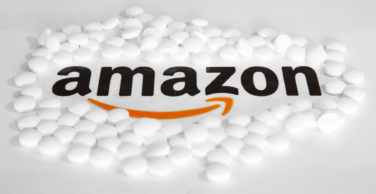Community pharmacies are expanding their role in helping patients improve their health. One of the biggest drugstore chains describes the new tools it is developing to improve outcomes.
The modern pharmacist’s role in health care is expanding dramatically. Far from merely “putting pills in a bottle,” pharmacists have the ability— many say the responsibility— to promote overall health and wellness among patients and the public. According to the World Health Organization’s landmark handbook, Developing Pharmacy Practice—A Focus on Patient Care, these services can or should include:
- Drug monitoring and identification of drug-drug interactions,
- Education and patient counseling,
- Care management for chronic conditions,
- Participation in multidisciplinary clinical care teams,
- Medication therapy management and drug utilization review,
- Formulary management,
- Immunizations, and,
- Public health initiatives such as smoking cessation programs and diabetes education.
The tectonic shifts occurring in U.S. healthcare policy, practice and marketing give community pharmacies a unique opportunity to serve on the front lines of the emerging health care system by providing these expanded services to improve patient outcomes—bettering lives and lowering costs along the way.
The changes in our health care system have placed a premium on low-cost, high-efficiency innovations. In pharmacy, the simplistic solution is to drive patients to mail-order dispensing and call-center medical assistance in order to “save” money in pharmacy benefit plans. In this view, drugstores are dinosaurs. Lost in this “race to the bottom,” however, is the potential for experienced community pharmacists to reduce health care costs by promoting the optimal use of medication and other therapies in ways that can result only from patients’ personal interaction with a trained pharmacist at the nearby community drugstore.
As James Quillin of the Louisiana Academy of Medical Psychologists said recently, “[The] personal relationship that exists between a pharmacist and the patient is an important part of the collaboration of care that helps ensure effective, cost-efficient treatment. Access to drugstores, in cities both large and small, should not be removed from the equation.”
PHARMACIST INTERVENTION REDUCES COSTS
The World Health Organization review of available research supports Dr. Quillin’s view, stating, “Overall … there is considerable high quality evidence to support the value of professional pharmacy services in improving patient outcomes or medication use in the community setting.” The organization cited an Australian study on the economic impact of increased clinical intervention rates in community pharmacy, finding that adequately trained and remunerated pharmacists generated savings (on health care, medicines and pharmacy practice costs) six times greater than those of a control group with no access to the same education or remuneration. The Australian study estimated that these pharmacists would save its health care system 15 million Australian dollars (about U.S. $15 million) a year, and similar findings are reported from the United States.
My bias as a pharmacy executive at Walgreens is clear—we believe in the value of community pharmacies in advancing health care and controlling costs through the role our pharmacists and health care providers play at more than 7,700 locations throughout the United States. We recognize the value of cost-saving innovations, such as mail order pharmacy, and offer those services. However, we are committed to the important role that community pharmacists can play in advancing health care across chronic and specialty care through our national footprint and expanding range of interventional services. We also know—from our experience— that the “human touch” provided by community pharmacists can play an even greater role in advancing patient outcomes and cost-efficiency.
NOT YOUR GRANDFATHER’S DRUGSTORE
With that vision and commitment, we are advancing the traditional role of community pharmacy, expanding our range of clinical services and seeking to integrate with local health-care systems. Look at some current programs:
- Hosting more than 350 in-store Take Care Clinics across the nation, and plan to increase that number substantially in the next few years. These clinics offer a wide range of convenient, affordable health services, providing patient access to appropriate healthcare as an alternative to emergency room care or when the primary care physician isn’t accessible.
- Providing flu shots and health-testing services that include blood glucose, A1C hemoglobin levels and blood pressure. (Walgreens is the nation’s largest provider of flu shots in America after the U.S. government.)
- Providing home infusion and specialty pharmacy services, providing cost-effective solutions for patients, payers and manufacturers across all core therapeutic areas.
- Operating hospital pharmacies (we serve 137 health system partners nationwide, plus more than 350 worksite health and wellness centers on employer campuses).
EXPANDING PARTNERSHIP WITH PHARMA
The chain pharmacy’s large and growing footprint in community health care, coupled with our marketing services, offers a tremendous opportunity for the pharmaceutical manufacturing industry.
We all know manufacturers are facing significant disruption in how they market and deliver products to patients. The pharmacy can help. Here’s how: Traditionally, our engagement with pharmaceutical manufacturers has been largely transactional, focused on negotiating price. Today, we are forging broad, strategic, collaborative relationships with manufacturers. The goal is to harness a range of clinical and marketing assets to help manufacturers launch products, support adherence and increase utilization among patients in a clinically appropriate way.
Retail pharmacy can play a much greater role through relationships with manufacturers to help them educate, activate, and retain patients and help patients acquire and adhere to their medication. The vision is to fundamentally redefine how retail, specialty and home infusion lines of business engage with pharmaceutical manufacturers, and to build broader strategic relationships across all key segments including brand, specialty, vaccine and generic drug makers. We hope that manufacturers come to see the pharmacy—especially ours—as a key asset and partner as a marketing channel for their products.
PROMOTING ADHERENCE TO MEDICATION REGIMES
A good example of what pharma and pharmacy can do together is promoting adherence. We’ve learned that medication adherence services, counseling, and other assistance lower medical costs by improving outcomes. These services include face-to-face, new-to-therapy counseling for both specialty and chronic care; a monthly adherence call to inform patients about critical upcoming blood tests required to continue therapy; next-day home delivery for medications; access to co-pay assistance programs to help patients minimize risk resulting from economic circumstances that may interfere with compliance; and alerts for missed doses, at-risk patient behavior, or serious adverse side effects that are communicated to a prescribing physician.
Moreover, offering longer, 90-day supplies of medication, through a 90-day retail campaign, can further promote adherence more effectively than traditional mail-order service. Engaged pharmacists have consistently demonstrated increased adherence to chronic medicines for high-risk conditions for the populations that we serve. For example, patients in one study who filled their statin and thyroid medications at community pharmacies—and who consulted with a pharmacist—showed significant improvement in first-refill rates (from 55.7% to 70.4%) after the adherence program began.
Health testing is another area where community pharmacists enhance health and cost-savings. A recently published study showed that patients who engage in wellness activities have an overall healthcare expense of $160 lower than nonparticipants, with inpatient expenses $183 lower than non-participants. Health testing—such as blood pressure, blood glucose and A1C—allows payers to achieve these cost savings and receive real-time data that includes adherence to medications.
Consider also the benefit of pharmacist interventions on clinical outcomes for patients managing diabetes and other chronic diseases. In one study, we established that diabetes patients who participated in a disease-management program, leveraging face-to-face interactions with a pharmacist, demonstrated high levels of engagement (over 90%) and significantly improved clinical outcomes.
Chronic disease is arguably U.S. healthcare’s most pressing concern, and diabetes is one of the most difficult —and most costly—chronic conditions to manage. We recognized that the community pharmacy’s ability to reach patients where they work and live, coupled with a diverse team of 75,000 health care service providers and an understanding of the power of face-to-face interactions on health outcomes, presented a unique opportunity to help patients learn how to live healthier and better lives.
This study showed significant patient improvement: the proportion of participants with combined HbA1c, blood pressure and cholesterol values at clinical guideline goals increased from 11.8% to 21.8%, an 85% improvement. At 18 months, more than 90% of patients stayed engaged in the program. Patients also had exceptionally positive reactions, reporting 100% overall satisfaction with the pilot. Several called it “life-altering.” The result: HbA1c values decreased from 7.72% to 7.05%, HDL values increased from 42.75 mg/dl to 44.38 mg/dl, and 58% of patients achieved the goal of less than or equal to 7.0% for HbA1c versus 48% at inception.
Other studies provided similarly positive results for pharmacist intervention:
- A 30-employer sponsored program executed in 10 U.S. cities where community pharmacists coached patients on diabetes management, including goal-setting, proper use of medications and condition tracking, found that after one year patients reduced average HbA1c by 5.2%, LDL by 3.1%, systolic blood pressure by 2% and diastolic blood pressure by 2.5%, while patient flu vaccination increased by 42% and foot examinations increased by 79%.
- Two comprehensive care management and care therapy management programs— DiabetesCARE and CardioCARE— found meaningful results after an initial hour-long assessment followed by three two-hour sessions on self-management and quarterly follow-up visits to review progress against goals and a limited exam. After one year, patients with HbA1c greater than 9.0 dropped by 16 percentage points, vaccination for influenza increased 16 percentage points and for pneumonia by 18 percentage points, and patients with LDL less than 130 mg/dl increased by 29 percentage points.
- Patients with access to pharmacist counseling prefer face-to-face interaction to telephonic or mail-order channels and show higher adherence for chronic medications. A retrospective non-case-controlled study using pharmacy claims data showed that workplace-treated patients had 9.72% higher overall adherence rates.
- Adherence to chronic medications in the workplace pharmacy versus mail-service pharmacy also improves—medication possession ratio (MPR) for patients filling 90-day scripts in the workplace was more than 81% vs. 78% for mail order, while gaps in therapy of more than 30 days in the workplace was about 45% vs. 57% for mail order. MPR and gaps in therapy generally result in lesser adherence.
A CHALLENGE TO PHARMACISTS
The WHO pharmacist handbook quotes a European study that applies to pharmacists in the United States and the world over, and which Walgreens welcomes:
“Pharmacists should move from behind the counter and start serving the public by providing care instead of pills only. There is no future in the mere act of dispensing. That activity can and will be taken over by the Internet, machines, and/or hardly trained technicians. The fact that pharmacists have an academic training and act as health care professionals puts a burden upon them to better serve the community than they currently do.”
To me, that view represents the future of community pharmacy—and our devotion to health care—in the United States.
Gerald Gleeson is Walgreens Divisional Vice President of Pharmaceutical Development. He can be contacted at







